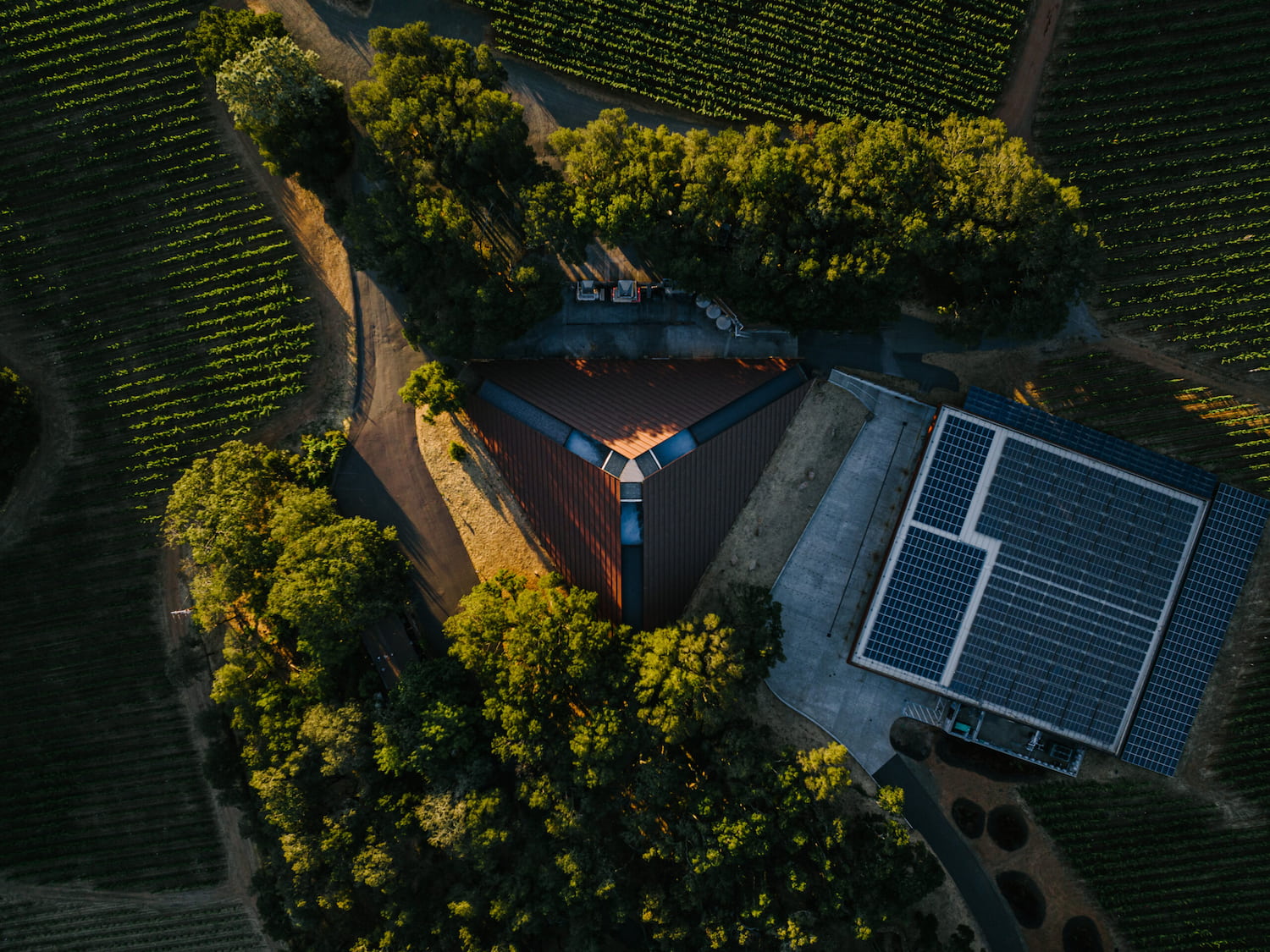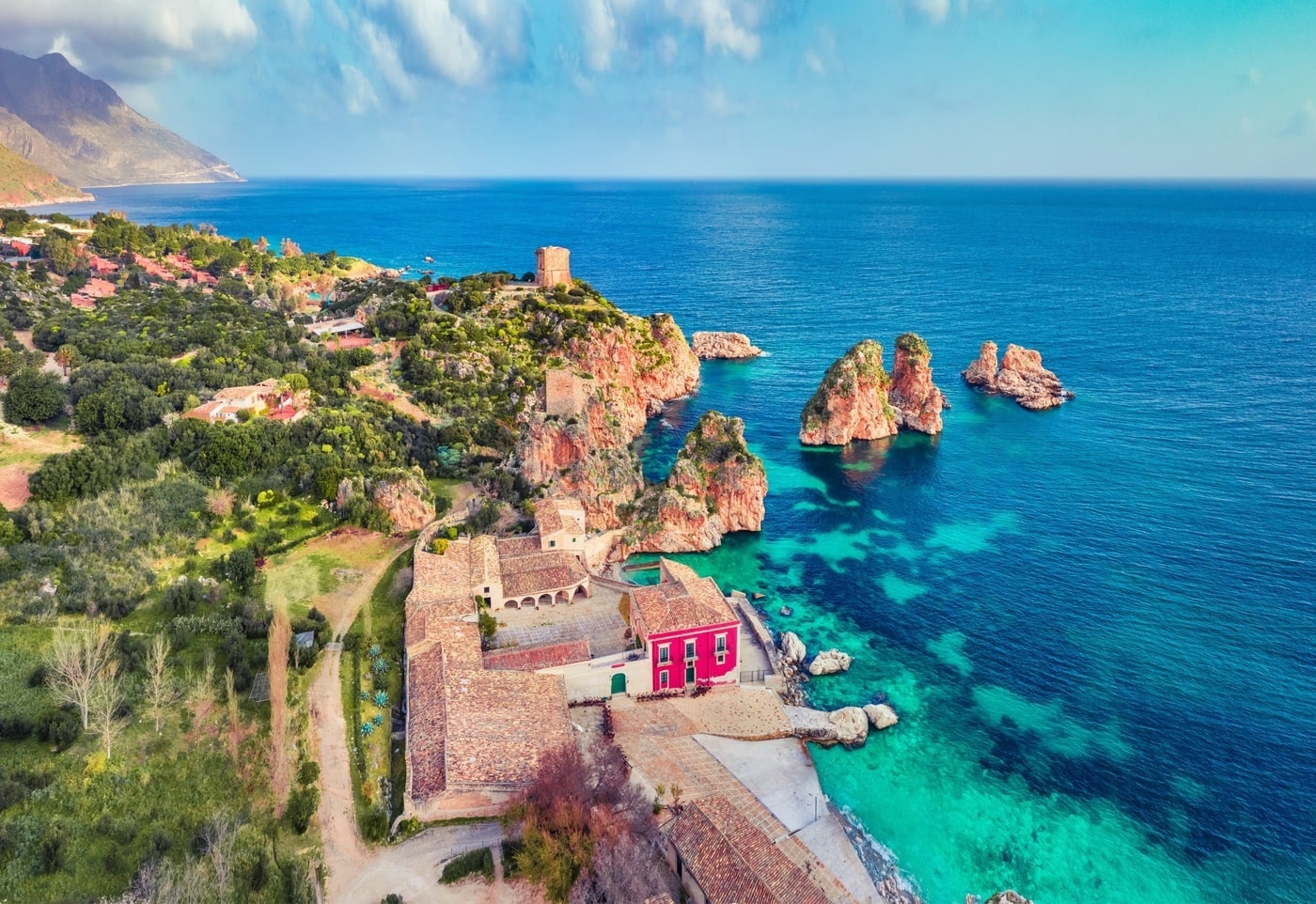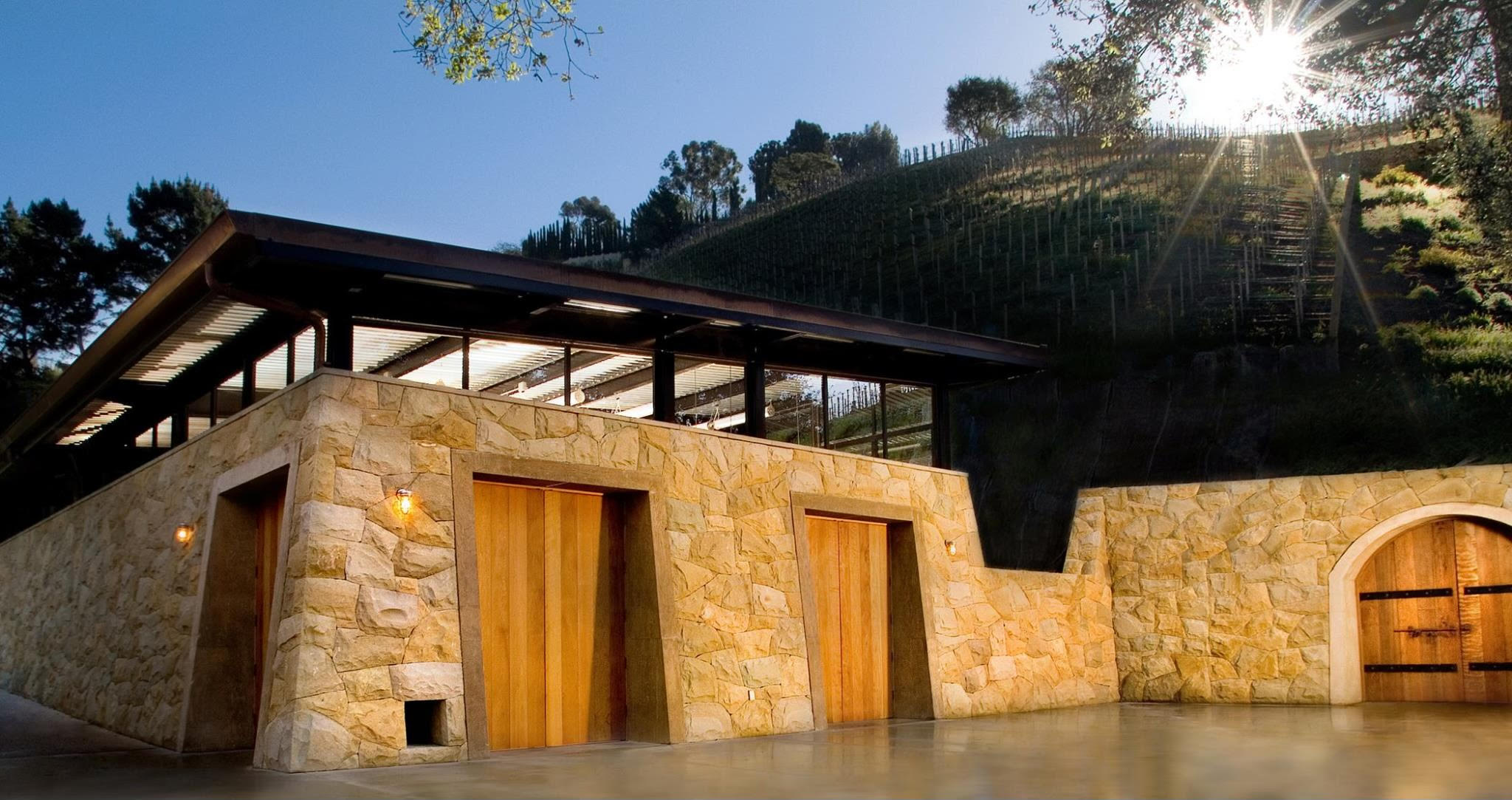In the realm of global wine production, Italy sits atop of the throne. While France and Spain regularly give the country a run for its money, Italy has held the number one wine-producing country title (in terms of volume) since 2014—and its production is far more intricate than you may think. Although certain regions dominate in popularity—think Chianti, Prosecco, and Barolo—Italy’s 20 diverse viticultural zones put out a massively diverse array of wine that span the entire flavor profile spectrum. Curious to learn more? We’re breaking down everything you need to know about Italy’s prestigious wine regions, starting with the country’s ten northerly regions here in Part I. Get your glasses ready (and stay tuned for Part II, coming soon!)
Liguria

Total Hectares: 1,600+
Key Grapes: Vermentino, Pigato, Rossese
Benchmark Producers: Bruna, Bisson, Punta Crena
Home to the Italian Riviera—that’s Cinque Terre, for all of our Italian travel fans—Liguria’s gastronomic delights are just as mind-blowing as its scenery. Known for lemons, paniccia (made with chickpea flour), and savory pesto sauce, the region’s fresh, citrus-driven cuisine comes to life alongside its signature wines. Expect high-acid Vermentino, floral-tinged Pigato, and savory, earth-driven reds produced from the local Rossese variety.
Piedmont

Total Hectares: 48,000+
Key Grapes: Nebbiolo, Barbera, Dolcetto, Moscato
Benchmark Producers: Conterno, Giacosa, Mascarello, Vietti
In the realm of Italian wine-producing regions, Piedmont is considered one of the greats. Although home to the country’s two ‘Big Bs’—Barolo and Barbaresco—the area’s wine production goes far beyond these Nebbiolo-based powerhouses. Approachable reds made from Dolcetto and Barbera are generally what fill the locals’ glasses, along with crisp whites crafted from Arneis and sweet, easy-drinking Moscato to finish. For Nebbiolo lovers looking for something more attainable than the above, we recommend looking to the northerly Alto Piemonte appellations of Gattinara, Ghemme, and Colline Novaresi.
Valle d’Aosta
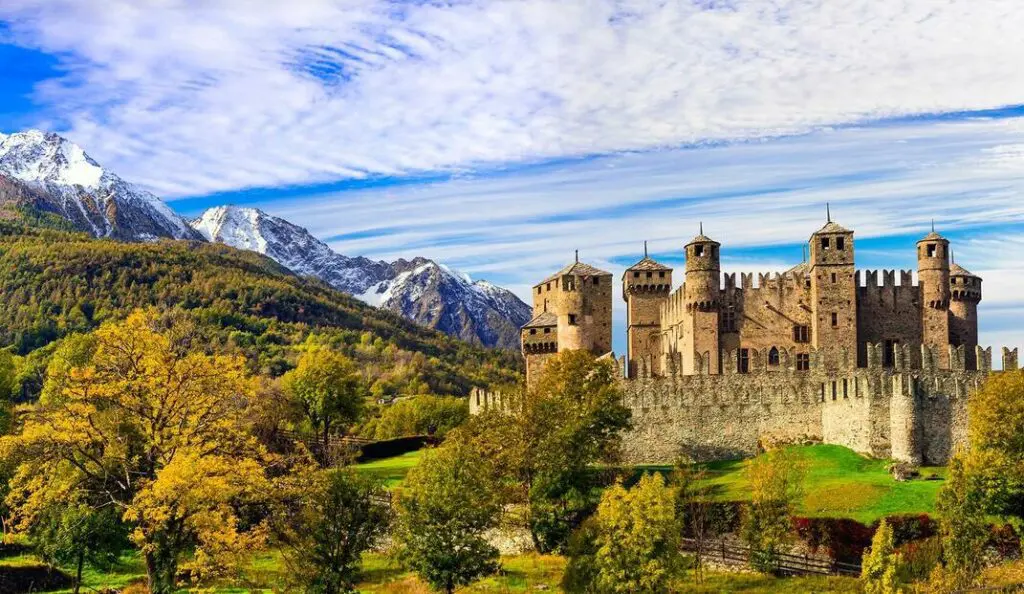
Total Hectares: 400+
Key Grapes: Petit Rouge, Nebbiolo, Pinot Nero
Benchmark Producers: Grosjean
Valle d’Aosta is Italy’s smallest wine-producing region. Home to just 400 hectares of vines, this tiny, Alpine-influenced area produces a miniscule amount of wine compared to other regions, though for fans of high-acid, herbal reds, the wines aren’t to be missed. Grosjean is by far the most popular Valle d’Aosta producer, and upon first taste, you’ll realize why they’ve captivated the hearts of wine lovers and industry folk alike. Pro tip: Although the more recognizable Pinot Nero is produced here, we recommend springing for Petit Rouge or Nebbiolo, should you stumble upon a bottle or two.
Lombardy
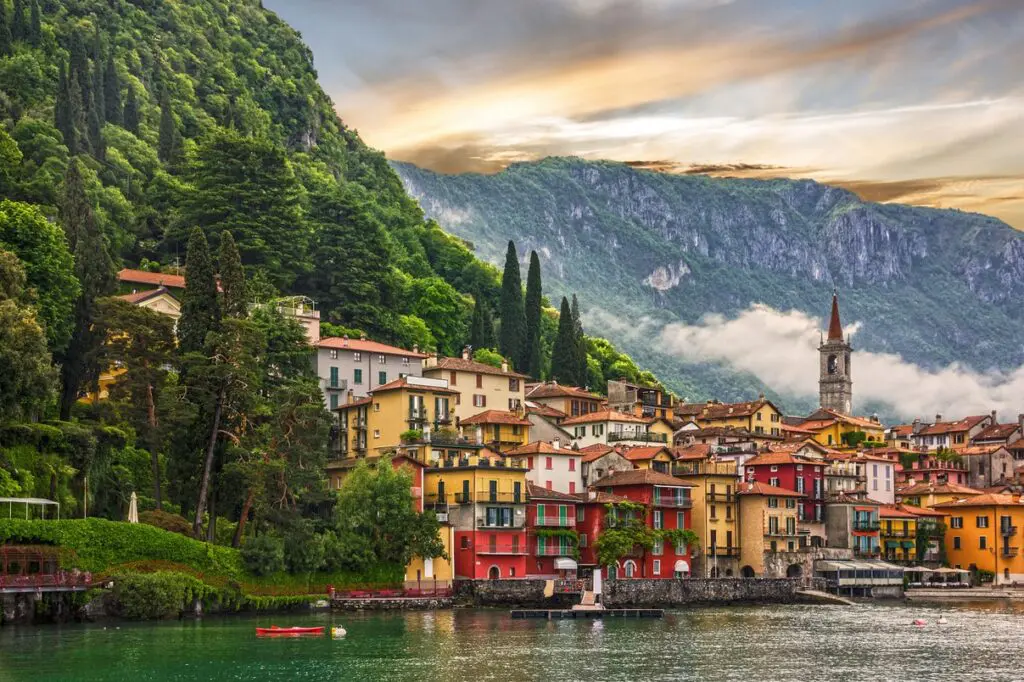
Total Hectares: 22,000+
Key Grapes: Chiavennasca (Nebbiolo), Croatina, Pinot Nero
Benchmark Producers: Pasini San Giovanni, ArPePe, Barone Pizzini
Although Lombardy often takes a backseat to its neighboring regions of Piedmont and Veneto, the high-quality bottles coming out of this region certainly aren’t to be missed—especially if you’re a fan of Nebbiolo or traditional method bubbles. As prices climb for Barolo and Barbaresco, seeking out locally produced bottles of Chiavennasca (that’s Nebbiolo in the dialect), specifically from Valtellina, offer a great alternative. For Champagne lovers, diving into a bottle of traditional-method Franciacorta promises a seriously good time—and completely different experience than that of Veneto’s Prosecco. In fact, Franciacorta’s sur-lie aging time requirements are twice as long as that of Champagne (30 months versus 15 months).
Trentino-Alto Adige

Total Hectares: 15,000+
Key Grapes: Pinot Grigio, Gewurztraminer, Chardonnay, Lagrein, Schiava
Benchmark Producers: Alois Lageder, Elena Walch, Ferrari
Trentino-Alto Adige is one of Italy’s most diverse regions. Here, the language, wines, and overall culture are influenced not just by Italy, but also neighboring Austria and Switzerland, leading to a melting pot of a region—especially in the realms of food and wine. Expect everything ranging from half-moon ravioli to dry-cured meats on your plate, and in your glass, everything from Pinot Grigio to Gewurztraminer to inky-hued Lagrein and beyond. No matter what your wine preference is, you really can’t go wrong here.
Friuli-Venezia Giulia

Total Hectares: 20,000+
Key Grapes: Pinot Grigio, Friulano, Merlot, Sauvignon Blanc
Benchmark Producers: Ronco del Gnemiz, Via Alpina
In terms of diversity, Friuli-Venezia Giulia is just as broad as neighboring Trentino-Alto Adige. Bordered by Austria, Slovenia, and the Adriatic Sea, this multi-cultural region is known for producing some of Italy’s best wines, especially in the white wine sector. Generally known for their zesty acidity and herbaceous undertones, these acid-forward wines are perfect for sipping with a variety of cuisines, especially the local seafood, salami, and polenta-based dishes. Sweet wine lovers, should you cross Verduzzo Friulano or the very rare Picolit, be sure to grab them.
Veneto

Total Hectares: 94,000+
Key Grapes: Glera, Garganega, Corvina
Benchmark Producers: Quintarelli, Brigaldara, Pra, Bisol
Best known for its breathtaking canals and colorful islands, Veneto’s food and wine scene is just as eclectic as its scenery. Beloved for its tradition of cicchetti, that is, small snacks and sandwiches served alongside beer, wine, and spritzes, as well as its diverse vino scene, this gastronomic mecca promises a whirlwind adventure for wine lovers of all preferences. From bubbly Prosecco to refreshing whites from Soave to flavor-packed reds of Valpolicella—and even punchier, fuller-bodied Amarone—there’s really nothing that this vast viticultural region can’t do.
Emilia-Romagna

Total Hectares: 61,000+
Key Grapes: Lambrusco, Trebbiano
Benchmark Producers: Venturini Baldini, Chiarli
If Emilia-Romagna is the name, Lambrusco is the game. While other table wines produced from local varieties exist, it’s the region’s frothy, semi-sparkling reds that have captured the hearts of locals and international visitors alike. Produced from a number of eponymous clones, Lambrusco falls all over the dryness-sweetness scale, meaning there’s a perfect bottle to accompany whatever’s on your plate. Best of all, these wines generally offer a lower ABV than most table wines, and are almost always affordable, meaning sipping on them all day long is as attainable as ever.
Tuscany

Total Hectares: 57,000+
Key Grapes: Sangiovese, Vernaccia
Benchmark Producers: Biondi-Santi, Fontodi, Poggio di Sotto
Tuscany has long been a gateway region for wine lovers around the world, and it’s no surprise why. From affordable Trebbiano and Vernaccia di San Gimignano to straw basket-wrapped bottles of Chianti, almost everyone can remember their first encounter with Tuscan wine—likely during a study abroad adventure or inaugural international jaunt to Florence. However, beyond entry-level bottles, Tuscany is home to some of the most prestigious wines in the world. From Brunello and Rosso di Montalcino to various designations of Chianti Classico to Vino Nobile di Montepulciano, Super Tuscans, and beyond, if medium to full-bodied reds are what you fancy, then Tuscany promises to seriously overdeliver.
Umbria

Total Hectares: 7,500+
Key Grapes: Sagrantino, Sangiovese, Grechetto
Benchmark Producers: Paolo Bea, Arnaldo Caprai
Known as the ‘green heart of Italy,’ Umbria is a lush and wild region in Central Italy. Bordered by Tuscany, Lazio, and Le Marche, it is the only landlocked region in the entire country, and is best known for its foraged truffles and unique wines. The mountaintop town of Perugia is the region’s capital, which is also known for its signature chocolate delights. In terms of wine, full-bodied reds from Sagrantino and Sangiovese reign king, with the eponymous Montefalco Sagrantino at the top of the hierarchy. For whites, nutty, fruit-forward wines produced from Grechetto and Procanico (AKA Trebbiano) are most popular, with the Orvieto DOC as its crown jewel. Umbria is conveniently located halfway between Rome and Florence, making it an easy (and highly desirable) pit stop between the two.
Vicki completed her Bachelor’s degree at CUNY Hunter College with a double major in French Language and Italian Language, along with a minor in English and additional studies in Spanish and Polish. Her wine industry career began at Sud de France Développement in Manhattan, followed by a Wine Consultant/Buyer position at Quality House Wines. She went on to work full-time as a staff writer for VinePair.com from September 2016 – July 2017. She now freelances full-time; her work regularly appears in Food & Wine, Wine-Searcher, Beverage Media, Matador Network, Wine Enthusiast, and more.








